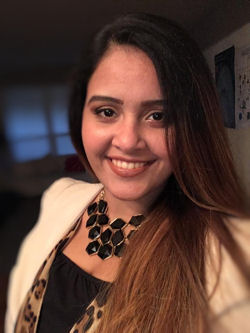During a student-mentorship link program in my sixth year of medical school, I attended a multidisciplinary meeting with pathologists, medical oncologists, surgical oncologists, and otolaryngologists to discuss an intriguing case: a 25-year-old female with rhabdomyosarcoma (RMS) of the larynx. During the meeting, there was an exhaustive discussion of different management options for adult RMS, yet it was difficult to reach a solid consensus due to a lack of supporting evidence. Eventually, physicians decided to discuss feasible management plans and chemotherapy options with the patient, highlighting the limited existing data on the performance of each in patients with adult RMS.
RMS is a highly malignant soft tissue sarcoma that is typical in children but rare in adults. Unlike the substantial improvements achieved in the management and survival of pediatric patients, survival of adult patients remains significantly worse, with only 20%–40% living for 5 years. In general, clinical practice guidelines (CPG) for rare diseases are scarce. In 2017, the Orphanet (the most comprehensive international database dedicated to rare diseases) estimated that out of more than 7,800 rare diseases/group of diseases, only 1,122 (14%) were covered by universally acceptable CPGs. The rarity of these diseases in general and the aggressiveness and dismal survival rates of adults with RMS in particular hinder patient accrual to randomized controlled trials, the availability of large patient datasets, and development of high-quality guidelines. As a result, management of these patients is an ongoing controversy centered around whether it should be based on a modified protocols of pediatric treatment or adult soft tissue sarcoma.
Knowing these facts, I decided to join efforts with the head of adult sarcoma division at our clinical oncology institute to further explore the disease on a 2-year research journey. We ended up compiling and analyzing one of the largest and most comprehensive databases for the disease by systematically and painstakingly mining all published case reports and case series in the literature for information on more than 550 patients. We further expanded the database by updating follow-up information on most patients.
At the early stages of project execution, the biggest challenge for me and other medical student authors was to compile a detailed patient database that takes into consideration the different demographic, clinic-pathological, and treatment- and outcome-related variables used in oncology practice. It is uncommon for medical students to have a good deal of knowledge of clinical oncology practice and cancer research, as they usually get exposed to oncology as a part of their general surgery or internal medicine curricula, without stand-alone training. Therefore, I initiated a collaboration with our sarcoma unit to organize clinical as well as theoretical training sessions for medical student authors. We were in charge of the supervised data extraction and mining phase. For six months, I divided my time among managing the self-organized rotation at Sarcoma Unit, my sixth-year core rotations, studying, and progressing in the research project. With time, we became very well accustomed to the terms, concepts, and definitions used in the oncology practice and developed adequate knowledge of most staging systems and an understanding of complex tumor histopathology and radiology reports. Only then did handling the vast amount of data from published patient records became a doable task.
For a preceding project, I learned and executed most statistical analysis required, but for the adult RMS project the level of complexity in the patient database and number of variables (>100) was overwhelming. It was clear that we needed lots of freedom in handling subtle details about the data. Therefore, we decided to seek help from a friend who is a PhD candidate at the Department of Biomedical Informatics at Emory University. Using machine-learning validation approaches, we were able to conduct a more robust survival analysis, reveal new patterns of survival, and address pertinent therapeutic questions.
One of our main findings highlighted the superiority of chemotherapy regimens, adapted from pediatric RMS protocols, compared with the anthracycline-based regimens—the gold standard in adult soft tissue sarcoma protocols. The final project is in press, and we hope it serves as a clinically impactful step toward developing CPGs for RMS in the near future.
The RMS project experience was undoubtedly one of the most challenging I ever had, yet the knowledge and skills I developed and the colleagues, mentors, and experts I met along the way were invaluable. During the 2-year journey, I developed a thoughtful mind that's hungry to improve and beat the standards and since then, handling and experimenting on large datasets of patient information has become a passion. Moreover, deciding the marriage between medicine and informatics was one of best decisions I ever made. For the first time I experienced the vast applications of “informatics” tools in medicine, with the end goal of improving diagnostic accuracy, disease prognostication, and clinical decision-making. This experience encouraged me to explore pathways that combine my love of internal medicine and clinical oncology with informatics training. One of several tracks I am considering pursuing after my medical residency training is the “Clinical Informatics” Subspecialty Fellowship Program offered for accomplished physicians.
I aspire to become a physician-scientist who is able to make significant and impactful contributions to translational and clinical research while providing world-class medical care. I believe that succeeding among a promising group of colleague researchers to address and fulfill an unmet need in medical literature is the first step toward making my dream come true.
References:
Pavan, S. (2017). Clinical practice guidelines for rare diseases: the orphanet database. PloS one 12.1: e0170365.
Amgad, M., Shash, E., & Gaafar, R. (2012). Cancer education for medical students in developing countries: Where do we stand and how to improve? Critical reviews in oncology/hematology, 84(1), 122-129.

Maha Elsebaie
Ain Shams University, Faculty of Medicine, Cairo, Egypt

